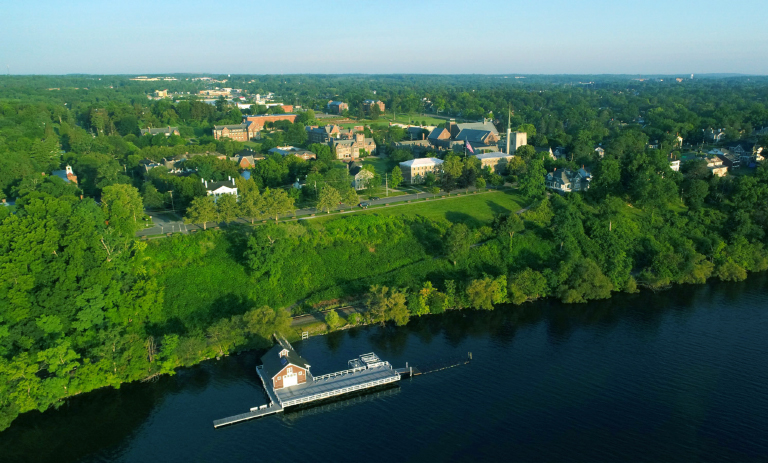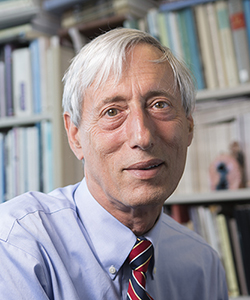
Lives of Consequence
John Yellen ’64

“When it comes to humanity and our ancient past, there’s a big difference between 40,000 years ago and 400,000 years ago,” says John Yellen ’64. “What led early humans to develop sophisticated tools? To express themselves creatively? To identify as tribes?”
Yellen, program director for archaeology at the National Science Foundation and a research associate at the Smithsonian Institution’s National Museum of Natural History, has spent his career answering these and other questions about the processes which led to the emergence of behaviorally modern humans.
“By 40,000 years ago or there about, people were essentially like we are today,” says Yellen, who examines behavior such as social interaction, culture and technology through the study of ancient objects like stone tools. “They buried their dead with grave goods. They painted realistic pictures on walls. They carved animals out of ivory. They had musical instruments. They had hairstyles. It’s really important because it means they had a social concept of who they were. If you go back half a million yeas, it’s very different,” he adds. “They’re hunting and gathering. They’re making stone tools. But their skulls are different. They have elements of human culture but all of those other things aren’t there yet.”
Born and raised in Brooklyn, N.Y., Yellen didn’t set out to be an archaeologist while attending Hobart, where he majored in English. But a couple of courses in anthropology sparked his interest.
“I had two anthro courses at Hobart,” he says. “Anthropology and archaeology interested me and they still do.”
After his time at HWS, Yellen went on to earn a master’s degree in archaeology from Harvard, where he met his future wife, fellow archaeologist Alison Brooks, then a senior undergraduate at Radcliffe College and later a fellow graduate student at Harvard. While taking an anthropology seminar, Yellen learned about a fellowship opportunity to study archaeology in Africa.
“That’s what really got me set on Africa and on archaeology,” he explains.
After getting his master’s in anthropology, Yellen earned a Ph.D. with a specialization in archaeology from Harvard. His work has mostly focused on the Middle Stone Age – a period of prehistoric Africa stretching from about 350,000 years ago to 40,000 years ago. During this time signs of modern human behavior gradually emerged.
Through the years, Yellen had conducted fieldwork at sites across Africa, including the Kalahari Desert, where he studied the !Kung Bushmen with Brooks. Their work has also led them to Ethiopia, Kenya and the Democratic Republic of Congo.
Yellen and Brooks’ research has been instrumental in a major shift in thinking around early humans. Their work has revealed flaws in the previously accepted view that there was a single, dramatic explosion in human cognition in the relatively recent past. The pair has instead demonstrated that rather than a burst of advancement, the development of the modern human mind took place little by little, over thousands of millennia.
Another great moment in this shift in thinking came in 1988 in Katanda, Democratic Republic of Congo (then Zaire), when Yellen and Brooks discovered sophisticated bone harpoon points that were shown to be up to 90,000 years old – a revelation to the paleoanthropology community because they were much older than previously believed possible.
“These were sophisticated instruments capable of spearing 150-pound, prehistoric catfish that could feed a band of hunter-gatherers for days,” says Yellen. Ancient stone tools and pieces of carved bones may seem like small, simple indicators of a long-ago tribe, but in the right hands, they can tell a big story.
“The origins of complex societies go back about 12,000 years,” say Yellen, appropriately the founder and president of the Paleoanthropology Society, an organization whose central goal is to bring together physical anthropologists, archaeologists, paleontologists, geologists and a range of other researchers to shed light on hominid behavioral and biological evolution. “When you get before that, most of the stuff you find is the remains of stone tools. But you can reconstruct people’s activities from stone tools. You can study how they made them and in doing so can trace cognitive development. You can trace people across landscapes and you can distinguish different cultures.”
